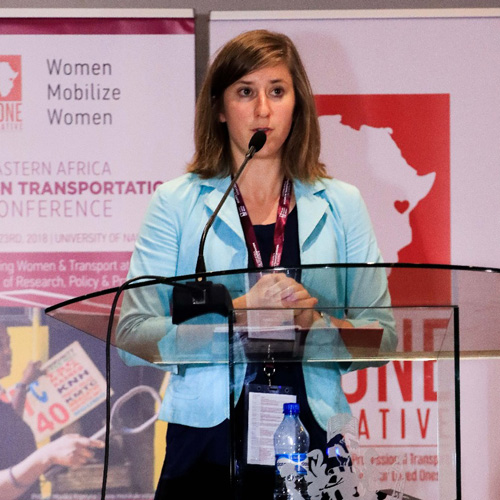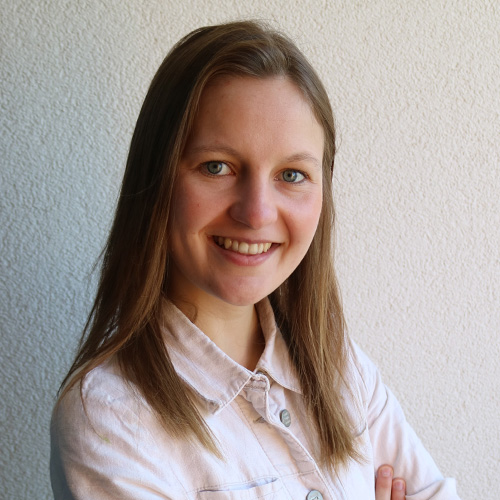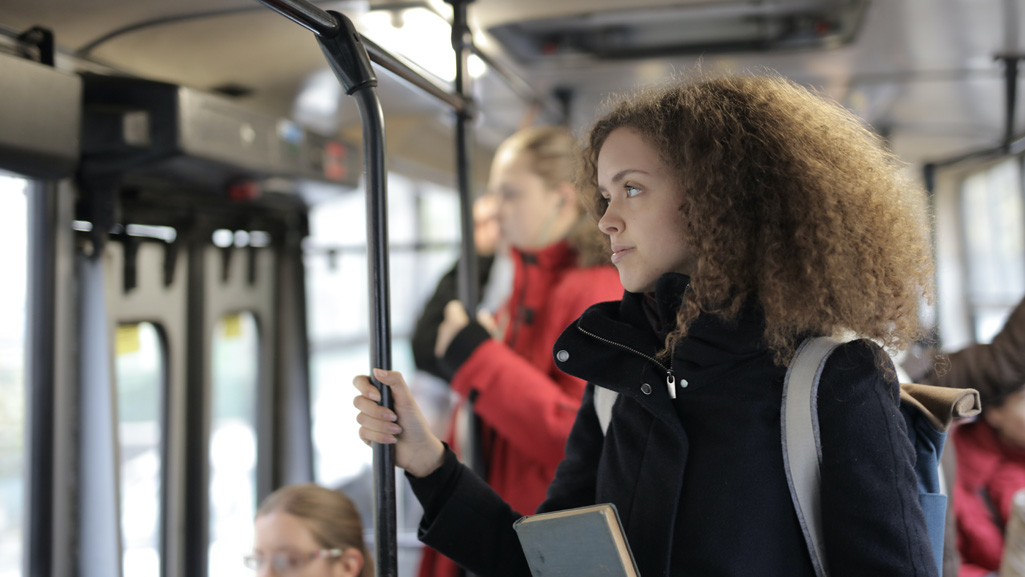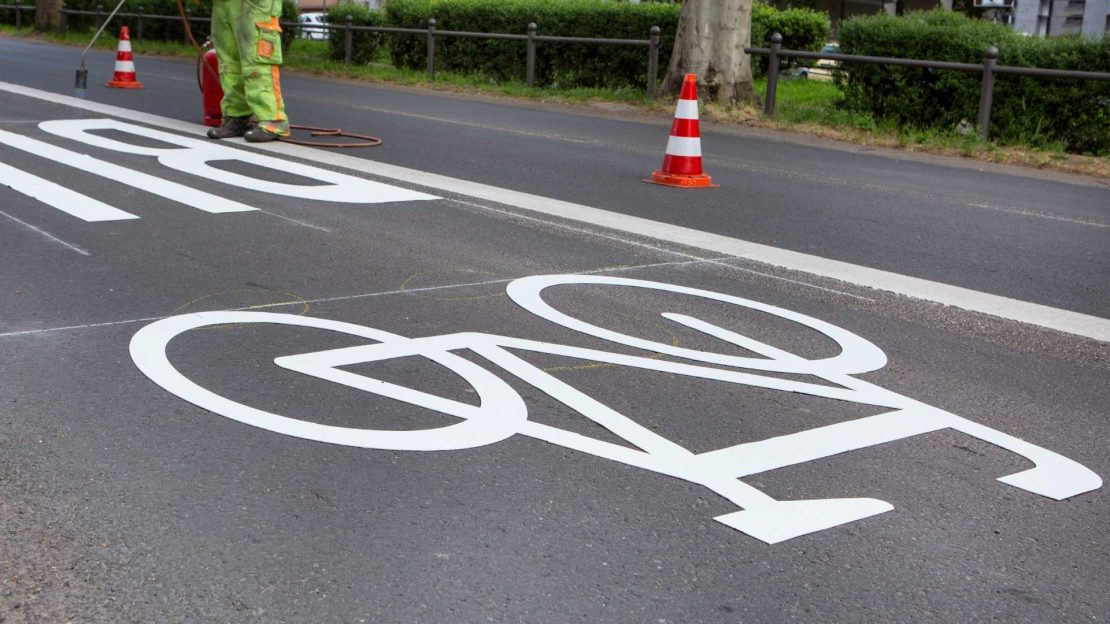In 2018, the Transformative Urban Mobility Initiative (TUMI) launched the Women Mobilize Women network to empower women in transport and to shape mobility more diversely. Leonie Guskowski and Verena Flues from the German Association for International Cooperation (GIZ) are in charge of this network. In this interview we talked with them about the topic of gender-sensitive mobility.
To get right into the topic, how are you travelling yourself?
Leonie: I am an enthusiastic cyclist
Verena: Me too, until I moved to Düsseldorf some time ago. Now, I’m commuting by train to Bonn, where the GIZ is situated, and I’m walking to get to the train station.
So, it seems to be true that women drive less than men? Do mobility pattern of the sexes really differ that much?
Verena: Of course, this cannot be generalized. Women and men are not a heterogeneous group in terms of housing, income or degree of motorization. But statistics show differences. Women use public transportation or walk more often. Especially in developing and emerging countries, women have much less access to a car than men. But even here in Germany, men drive almost twice as much by car than women, according to a study.
While mobility of men is often very linear, i.e. the way to work in the morning and back home in the evening, women make several shorter trips – what is known as trip chaining. This results from the fact that women usually take on the greater share of care work: Taking children to and from school, going to work, doing the groceries, etc.
Leonie: In the past, cities were planned in for cars with the typical male mobility pattern in mind. Trip chaining was not considered at all in the data that serves as the basis for urban and traffic planning. There is a veritable data gap. However, taking different mobility patterns and the needs of the different population groups into account, is so important for planning. Only like this mobility can become gender-sensitive, diverse and accessible.
What are needs of women concerning mobility?

Verena: The aspect of safety and security is very important. Many women have made bad experiences or are afraid of physical and verbal violence or sexual harassment in public transport and on the way there. In the recent years, cities were getting aware of this problem and are trying to address it through special campaigns. This includes, for example, better lighting at bus stops or the use of technologies such as video surveillance or apps to report problems. But also training of staff in how to deal with such assaults. An unsafe environment affects not only women individually, but in the long term the entire transportation system, because women are lost as passengers.
Is it not only about stopping the attacks themselves, but also the fear of them?
Verena: Yes, you’re right. According to a study from Latin America, such fears are even passed on from one generation to the next.
Leonie: In Bogotá, Colombia, there was a TUMI pilot project running, with the aim of improving security itself and the perception of security in public places and on public transport. With the help of an app, people were able to indicate where they felt unsafe. The data was then used to identify hot spots and targeted measures were implemented to improve the feeling of safety.
Verena: Sometimes only small amounts of money were needed to revive corners and make them safer, such as a new coat of paint or planting. It is impressive when you see before/after pictures.
Apart from security, what other needs of women should be addressed?
Leonie: In any case, accessibility. Women who travel with strollers or a lot of luggage need to be able to use transportation without complications.
Another important point is tariff integration. Especially in developing countries, women usually have lower incomes than men. Since they use different means of transport and have to pay for each trip individually, they often spend more money on mobility than men. It is therefore very helpful for them if they can use several buses or different means of transport with one ticket.
The Women Mobilize Women initiative is not only committed to taking the needs of women into account, but also to strengthening women working in the mobility and transport sector …
Verena: The entire sector is still largely dominated by men. This means a lack of experience. If I’ve never felt unsafe standing at a dark bus stop, or made the experience of how exhausting the trip from A to B during rush-hour gets with a baby carriage, I probably find it difficult to put myself in this perspective and improve the situation.
For this reason, TUMI started a conference to strengthen the role of women in the industry two years ago. The aim was on the one hand to connect women and give them a stronger voice in the sector. On the other hand, we wanted to jointly address the question of how gender-sensitve mobility can be improved, in urban planning and in the implementation of projects.
Leonie: Today, it has grown into a network of women from all over the world who want to actively change the mobility sector and make it more diverse. Regional groups have been established in Latin America and East Africa and numerous conferences and webinars have been organized.

We are receiving numerous inquiries, there is a strong interest in the topic is what rises awareness. One thing we are especially proud of, is the publication “Remarkable Women in Transport”, where we present women working in the transport sector every year.
Verena: It is great to see that so many things are on the move. Cycling, for example, has generally gained importance, among other things due to the Corona pandemic, but especially among women. In Latin America, there are many women’s bicycle collectives in which women support each other and, for example, teach each other how to ride a bicycle.
Leonie: In traditional societies, cycling is often not taught as naturally to girls as it is to boys. If you learn it as an adult in a city, the hurdle of cycling is very high. That’s why it’s important that there are other women who are aware of the problem and who strengthen each other. The cycling boom among women is a real empowerment movement. It’s a clear sign saying “we decide for ourselves, we teach ourselves!”



